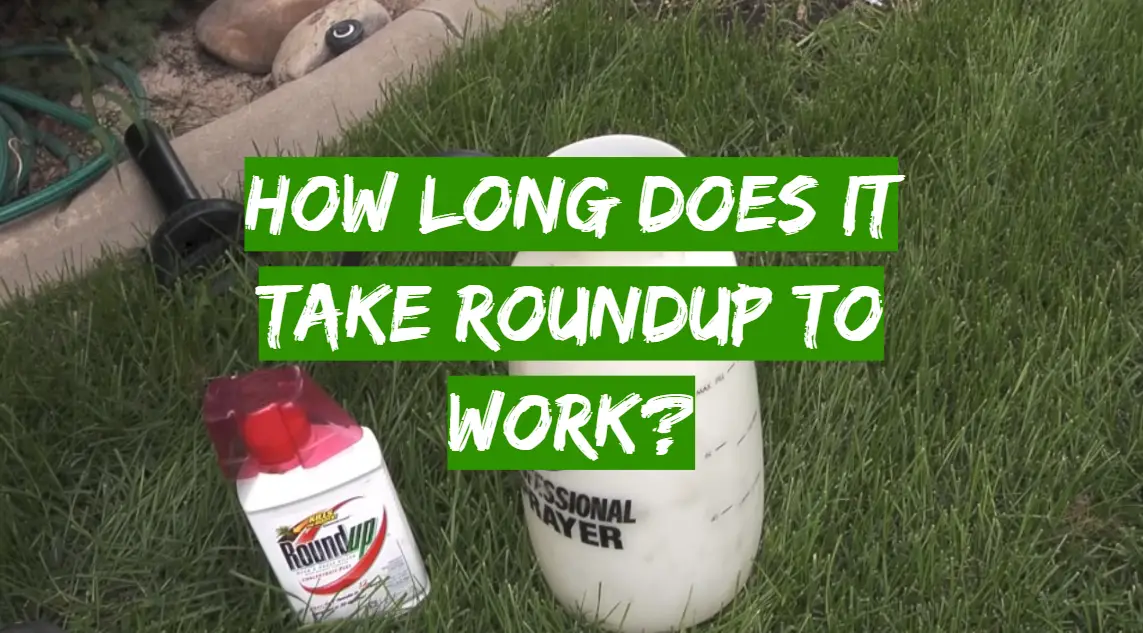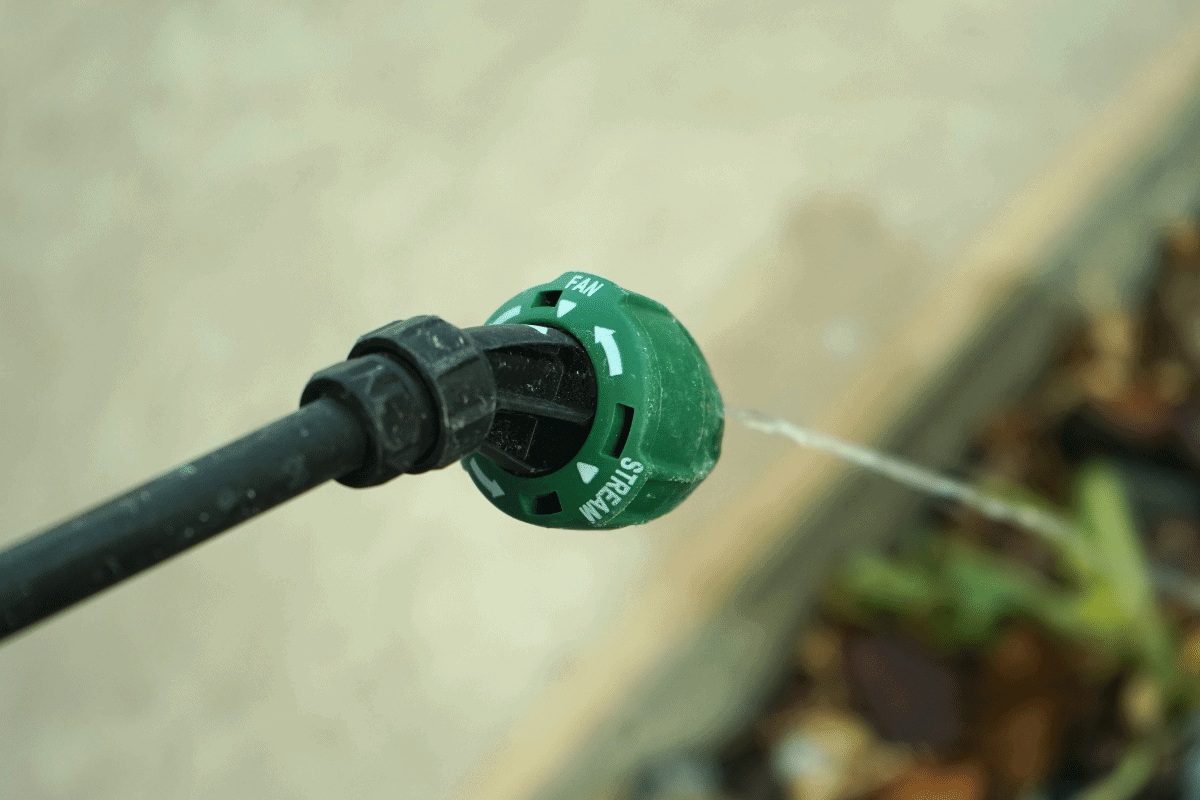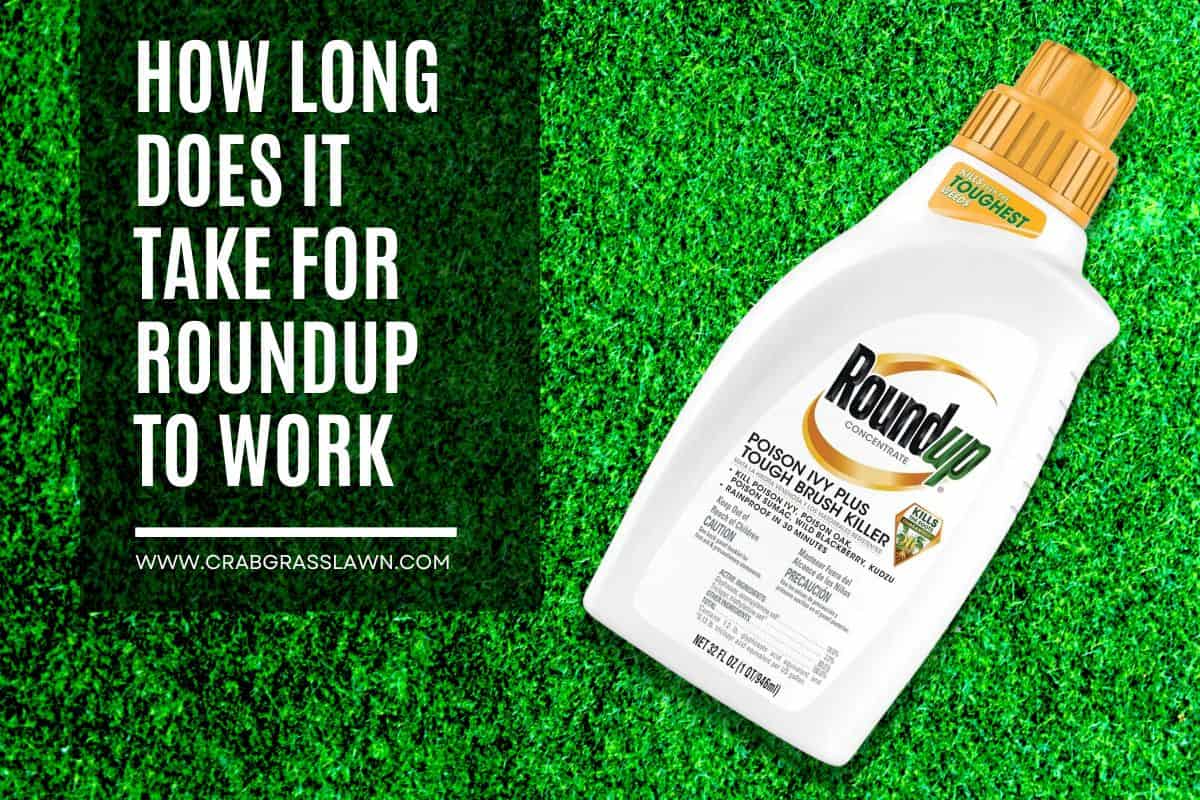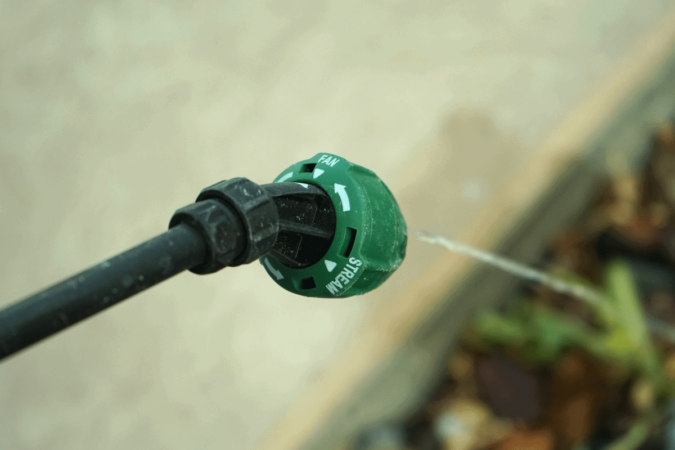
How long does Roundup take to work? This is a common question among homeowners and gardeners who are battling pesky weeds in their yards. The answer, however, isn’t as simple as a one-size-fits-all timeframe. Several factors influence how quickly Roundup, a popular herbicide, eliminates unwanted vegetation, ranging from the type of weed to the weather conditions.
Roundup, known for its active ingredient glyphosate, works by disrupting the plant’s ability to produce essential amino acids, ultimately leading to its demise. The effectiveness of Roundup depends on several factors, including the plant species, its growth stage, the weather conditions, and the soil type.
Understanding Roundup’s Action

Roundup, a widely used herbicide, effectively eliminates unwanted vegetation by interfering with plant metabolism. This action disrupts the plant’s ability to produce essential amino acids, leading to its eventual demise.
Active Ingredient and Its Effects
The active ingredient in Roundup is glyphosate, a broad-spectrum herbicide that targets the enzyme 5-enolpyruvylshikimate-3-phosphate synthase (EPSPS). This enzyme plays a crucial role in the shikimate pathway, a metabolic process that plants use to synthesize essential amino acids, proteins, and other vital compounds.
Glyphosate inhibits EPSPS, effectively halting the shikimate pathway and preventing the synthesis of essential amino acids.
This disruption ultimately leads to the plant’s death.
Comparison with Other Herbicides
Roundup’s mechanism of action differs from that of other herbicides. While some herbicides target specific plant hormones or disrupt photosynthesis, Roundup uniquely targets the shikimate pathway. This makes it effective against a wide range of plants, including grasses, broadleaf weeds, and woody plants.
Factors Influencing Time to Work
The time it takes for Roundup to work effectively can vary depending on several factors. Understanding these factors is crucial for optimizing application and achieving the desired results.
Weather Conditions
Weather conditions play a significant role in Roundup’s effectiveness. Temperature, rainfall, and humidity all influence how quickly the herbicide is absorbed and translocated within the plant.
- Temperature: Roundup works best in warm temperatures. Optimal temperatures for absorption and translocation range from 65°F to 90°F (18°C to 32°C). In cooler temperatures, the herbicide’s activity slows down, and it may take longer to achieve the desired results.
- Rainfall: Rainfall can wash away Roundup before it has a chance to be absorbed by the plant. Heavy rain within 24 hours of application can significantly reduce effectiveness. Applying Roundup before a predicted rain event is generally not recommended.
- Humidity: High humidity can also hinder Roundup’s effectiveness by slowing down the drying process. When the leaves remain wet for extended periods, the herbicide may not penetrate the plant tissue as readily.
Plant Species, Age, and Growth Stage
The type of plant, its age, and its current growth stage also influence how quickly Roundup works.
- Plant Species: Different plant species have varying levels of susceptibility to Roundup. Some plants are more readily affected by the herbicide than others. For example, broadleaf weeds tend to be more susceptible than grasses.
- Age: Younger plants are generally more susceptible to Roundup than older plants. This is because younger plants have a higher metabolic rate and are actively growing, making them more vulnerable to the herbicide’s effects.
- Growth Stage: The growth stage of the plant can also impact Roundup’s effectiveness. Plants that are actively growing and have a large surface area are generally more susceptible to the herbicide. For example, a plant in the flowering stage may be more susceptible than a plant in the seedling stage.
Soil Type and Composition, How long does roundup take to work
Soil type and composition play a crucial role in Roundup’s absorption and translocation.
- Soil Type: The type of soil can influence how quickly Roundup is absorbed by the plant roots. Sandy soils tend to drain quickly, which can reduce the herbicide’s effectiveness. Clay soils, on the other hand, can hold moisture and allow for better absorption.
- Soil Composition: The composition of the soil, including the amount of organic matter present, can also affect Roundup’s effectiveness. Soils with high organic matter content can bind to the herbicide, reducing its availability to the plant.
Optimizing Roundup Application
To optimize Roundup application for faster results, consider the following tips:
- Apply during ideal weather conditions: Apply Roundup on warm, sunny days with low humidity and no rain expected for at least 24 hours.
- Target younger plants: Apply Roundup to plants when they are actively growing and have a large surface area.
- Use the correct application method: Follow the manufacturer’s instructions for the recommended application method, whether it’s spraying, spot-treating, or using a ready-to-use product.
- Ensure thorough coverage: Apply Roundup to all parts of the plant, including the leaves, stems, and roots.
- Avoid over-application: Using more Roundup than recommended does not necessarily lead to faster results and can actually harm the environment.
Typical Timeframes for Weed Control

The time it takes for Roundup to effectively control weeds can vary depending on several factors, including the type of weed, its size, the environmental conditions, and the application method. Understanding these factors can help you predict the timeframe for weed control and make informed decisions about your application strategy.
Timeframes for Different Weed Types
The time it takes for Roundup to work on different weed types can vary significantly. This is due to the different growth habits and physiology of different weed species. Here’s a table comparing the typical timeframes for Roundup’s effectiveness on different weed types:
| Weed Type | Typical Timeframe for Visible Results | Typical Timeframe for Complete Control |
|---|---|---|
| Annual Broadleaf Weeds | 1-3 days | 7-14 days |
| Perennial Broadleaf Weeds | 3-7 days | 14-28 days |
| Annual Grasses | 1-3 days | 7-14 days |
| Perennial Grasses | 3-7 days | 21-35 days |
Note: These timeframes are estimates and may vary depending on factors such as weed size, growth stage, environmental conditions, and the concentration of Roundup used.
Expected Visible Results Based on Weed Type
Here’s a table outlining the expected visible results based on weed type and Roundup application:
| Weed Type | Expected Visible Results |
|---|---|
| Annual Broadleaf Weeds | Wilting, yellowing, and browning of leaves within 1-3 days. Complete control within 7-14 days. |
| Perennial Broadleaf Weeds | Wilting, yellowing, and browning of leaves within 3-7 days. Complete control within 14-28 days. |
| Annual Grasses | Wilting, yellowing, and browning of leaves within 1-3 days. Complete control within 7-14 days. |
| Perennial Grasses | Wilting, yellowing, and browning of leaves within 3-7 days. Complete control within 21-35 days. |
Note: These are general guidelines and may vary depending on specific weed species, environmental conditions, and application methods.
Observing and Evaluating Results

After applying Roundup, it’s crucial to monitor the effectiveness of the treatment to ensure the desired weed control is achieved. This involves understanding the signs of weed damage and death, as well as identifying potential issues that might hinder the process.
Visual Signs of Weed Damage and Death
Roundup works by disrupting the production of essential amino acids in plants, ultimately leading to their death. Visual signs of weed damage and death typically appear within a few days to a couple of weeks after application, depending on factors like weed species, environmental conditions, and the concentration of Roundup used.
- Wilting: One of the first signs of Roundup’s effect is wilting. Leaves may droop and become limp, indicating the plant is struggling to transport water and nutrients.
- Discoloration: The leaves of affected weeds might turn yellow, brown, or even black. This discoloration is a sign of chlorophyll breakdown, as the plant’s ability to photosynthesize is compromised.
- Stunted Growth: Roundup prevents the production of essential amino acids, leading to stunted growth. The weed may appear smaller than normal, with limited or no new growth.
- Leaf Drop: As the weed weakens, it may begin to shed leaves. This is a further indication of the plant’s declining health and inability to sustain itself.
- Complete Dieback: Eventually, the weed will completely die back, turning brown and dry. This indicates the Roundup has successfully killed the plant.
Proper Application Techniques and Timing
The effectiveness of Roundup is heavily influenced by the application techniques and timing.
- Target Application: Ensure the Roundup is applied directly to the weeds, minimizing contact with desirable plants. This can be achieved using a spot treatment method or a directed spray.
- Weather Conditions: Avoid applying Roundup during windy conditions, as it can drift and damage non-target plants. Ideally, apply Roundup on calm days when there is no rain expected within 24 hours.
- Growth Stage: Apply Roundup when weeds are actively growing, as they are more susceptible to the herbicide’s effects. Avoid applying it during periods of stress, such as drought or extreme heat.
- Dosage and Concentration: Use the recommended dosage and concentration of Roundup as specified on the product label. Over-application can damage non-target plants and potentially harm the environment.
Addressing Potential Problems with Roundup Application
While Roundup is a highly effective herbicide, there are instances where it might not perform as expected.
- Weed Resistance: Some weeds have developed resistance to Roundup. If the weed persists despite application, it might be resistant to glyphosate, the active ingredient in Roundup. In such cases, consider using alternative herbicides or consulting a professional for a more effective solution.
- Incomplete Coverage: If the Roundup doesn’t fully cover the weed, it may not effectively kill it. Ensure complete coverage of all foliage and stems for optimal results.
- Improper Mixing: Always mix Roundup according to the instructions on the product label. Improper mixing can lead to reduced effectiveness or damage to non-target plants.
- Environmental Conditions: Factors like temperature, humidity, and soil moisture can affect Roundup’s effectiveness. Apply Roundup under optimal conditions for the best results.
Safety Considerations and Precautions: How Long Does Roundup Take To Work
Roundup is a powerful herbicide that can effectively control weeds, but it’s crucial to use it safely and responsibly. Failure to do so can pose risks to human health, the environment, and even your property. This section will delve into essential safety measures to ensure the safe and effective use of Roundup.
Reading and Following Label Instructions
Understanding and strictly adhering to the label instructions is paramount for safe and effective use of Roundup. The label provides detailed information about the product, including its intended uses, application rates, safety precautions, and disposal methods. Always read the label carefully before using Roundup, and follow the instructions precisely. This ensures you are using the product as intended and minimizing potential risks.
Potential Risks Associated with Roundup Use
While Roundup is effective in controlling weeds, it can pose certain risks if not used appropriately. The active ingredient in Roundup, glyphosate, can be harmful to humans and animals if ingested or absorbed through the skin. It can also cause eye irritation and skin rashes. Additionally, Roundup can harm non-target plants, including beneficial insects and wildlife. Exposure to Roundup can also cause allergic reactions in sensitive individuals.
Safe Handling Practices and Protective Measures
To minimize exposure to Roundup and its potential risks, it’s crucial to follow safe handling practices and wear appropriate protective gear.
- Always wear gloves, long-sleeved clothing, and eye protection when handling Roundup.
- Avoid spraying Roundup on windy days to prevent drift and contamination of non-target areas.
- Do not apply Roundup near water bodies or areas where it can contaminate groundwater.
- Wash your hands thoroughly with soap and water after handling Roundup.
- Do not eat, drink, or smoke while handling Roundup.
- Store Roundup in its original container in a cool, dry place, out of reach of children and pets.
Proper Storage and Disposal Methods
Proper storage and disposal of Roundup are crucial to prevent accidental exposure and environmental contamination.
- Store Roundup in its original container in a locked, secure location, out of reach of children and pets.
- Do not mix Roundup with other chemicals, as this can create hazardous reactions.
- Dispose of Roundup properly, following the instructions on the label.
- Never pour Roundup down the drain or into storm drains.
- Contact your local waste management agency for information on proper disposal methods.
Epilogue
Understanding the factors that influence Roundup’s effectiveness and how to apply it correctly is crucial for achieving desired results. While Roundup can be a valuable tool for weed control, it’s essential to use it responsibly, following the manufacturer’s instructions and taking necessary safety precautions. By doing so, you can effectively manage weeds in your yard while minimizing any potential risks.
User Queries
How long does Roundup take to work on dandelions?
Roundup typically takes 7-14 days to effectively control dandelions.
Is Roundup safe to use around pets and children?
It’s essential to follow the label instructions and keep pets and children away from treated areas until the herbicide has dried.
Can I use Roundup on my lawn?
Roundup is not recommended for use on lawns as it will kill all vegetation, including grass.
How do I dispose of Roundup safely?
Never pour Roundup down the drain or into a water source. Follow the label instructions for proper disposal methods.





